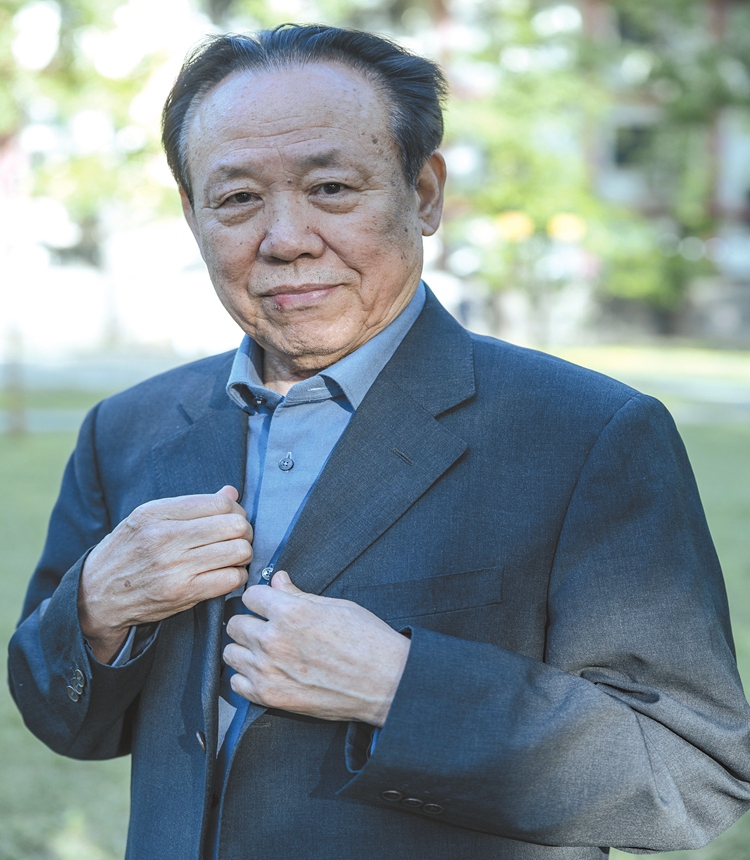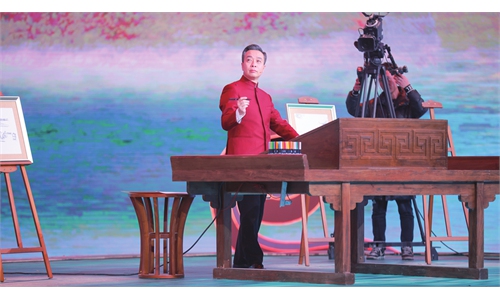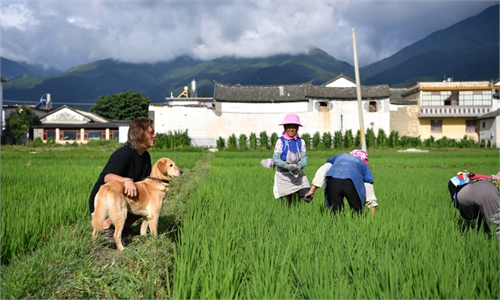ARTS / BOOKS
My journey with Spanish-Latin American poetry: a tie forged by serendipity and sustained by passion

Creative products of 'Spring Reading'- China-Latin America Literature Salon. Photo: Global Times
Editor's Note:In celebration of the 30th World Book Day, the "Spring Reading" - China-Latin America Literature Salon was held by the Global Times and the Embassy of Colombia on Tuesday with the participation of renowned experts in Chinese and Latin American literature, including Zhao Zhenjiang, a veteran Spanish language professor at Peking University. Zhao's literary career is highlighted by numerous translated works, including the translation into Spanish of Dream of the Red Chamber - one of China's Four Great Classical Novels. This article is based on Zhao's speech at the event.
On the occasion of World Book Day, I extend my gratitude to the Global Times and the Embassy of Colombia in Beijing for giving me this opportunity to share my connection with Spanish-Latin American poetry - a bond forged by serendipity and sustained by passion.
My encounter with Spanish-Latin American poetry began entirely by chance.
In 1959, I was admitted to the Department of Chinese Language and literature at Peking University (PKU) but was redirected to the School of Foreign languages to study French before even beginning my coursework.
After a year and a half of French studies, I was transferred again to the Spanish program, with the intention of training me as a future faculty member.
During my junior year, an Argentine professor, Pablo Duchisky, introduced our class to excerpts from Martín Fierro, the epic poem of the Gauchos.
Captivated by its narrative and artistic style, I began translating fragments into Chinese. Over time, this sporadic effort coalesced into a full translation of the epic's first volume by 1979.
That same year, during an academic exchange at the College of Mexico, a Mexican institute of higher education, I resolved to complete the translation.
Fortuitously, several Argentine scholars and students there assisted me greatly in resolving lingering challenges.
Upon returning to China in 1981, I met Professor Leguizamón, an expert on Gaucho literature from Argentina's National University of Cordoba, whose guidance enabled me to finalize the translation.
Though I never anticipated its publication, a timely request from the Argentine government - seeking international editions of Martín Fierro for an exhibition commemorating the 150th anniversary of Argentine author José Hernández's birth - led to its publication by the Hunan People's Publishing House in 1984.
The Chinese rendition of this wandering Gaucho bard was warmly received in his homeland, marking the beginning of my lifelong dedication to Spanish-Latin American poetry.
My early translations were published by many Chinese publishing houses as part of the "Nobel Literature Series" and "Latin American Literature Series," while later some publishing houses released my anthologies of Spanish and Spanish-Latin American poetry.
Over the decades, I have translated works by literary giants including Gabriela Mistral, Pablo Neruda and more, alongside comprehensive collections like Selected Latin American Poetry and Mexican Poetry Anthology.
My work has also extended to Spanish poets such as Antonio Machado, Juan Ramón Jimñenez, García Lorca, Vicente Alexandre, and Rafael Alberti, as well as anthologies like Golden Age Poetry and Contemporary Spanish Women Poets.
The influence of these poets on China's literary landscape is profound. Allow me to share three vignettes.
First, professor Sun Yushi, late director of PKU's Department of Chinese Language and Literature, once told me that after Neruda's Canto General was published in China, his classmates that were enrolled in 1955 would collectively recite the poem each morning.
Second, a poet friend confided that reading Octavio Paz's Sunstone over 200 times deeply inspired his award-winning poem Yongxue, meaning "Ode to Snow," which won China's inaugural Lu Xun Literary Prize.
Third, Jidi Majia, former vice chariman of the China Writers Association, frequently emphasizes how Latin American poets like Neruda, Vallejo, and Paz - with their grand vision, structure, and emotional depth - have illuminated his own creative journey.
Having devoted decades to poetry translation, I view it as a form of "secondary creation."
The perennial debate "Is poetry translatable?" was crystallized when Qi Shengqiao, PKU's former deputy dean of the Department of Spanish, once asked prestigious Chinese cultural scholar Zhu Guangqian how to translate Wang Bo's quatrain In the Mountains. Zhu's reply "It cannot be done."
When Zhu said it can't be translated, he meant to translate it exactly the same as the original poem, which of course was impossible.
The Chinese and Spanish languages belong to different linguistic families, employ distinct writing systems (logographic vs. alphabetic), and utilize contrasting prosodic features (tonal richness vs. rhythmic cadence).
Literal translation falters, as seen in challenges like the repeated character "blossom" in a poem from Dream of the Red Chamber.
In the first line, "hua," or "blossom," appears three times, but only once in the translation: "The blossoms fade and falling fill the air, Of fragrance and bright hues bereft and bare."
Such poetic in Chinese, become cumbersome in translation. Thus, while content may be conveyed, form often resists transference - a truth applicable to cross-family language translation.
Yet "translation as re-creation" remains our guiding principle.
As Paz observed, in theory, only poets should be able to translate poetry; in practice, few poets make good translators... The translator moves in the opposite direction: His goal is a poem analogous to the original.
A translator must balance fidelity with artistry, crafting verses that resonate in the target language while honoring the source.
Take Martín Fierro as an example. Composed in octosyllabic Spanish folk verse, its 7,200 lines demanded adaptation to Chinese heptasyllabic meter - the closest analogue to our poetic tradition.
This "near-literal" translation preserves rhythm while adapting to Chinese prosody. To readers of translated poetry, I offer this reminder: A translated poem is not the original - it is the translator's creation in another tongue.
As such, fine translations should read as original works, while mediocre translations risk resembling imitations.
In closing, let us celebrate poetry's power to transcend borders - not through perfect replication, but through providing shared human experience.
Thank you.

Zhao Zhenjiang Photo: Courtesy of Zhao Zhenjiang



